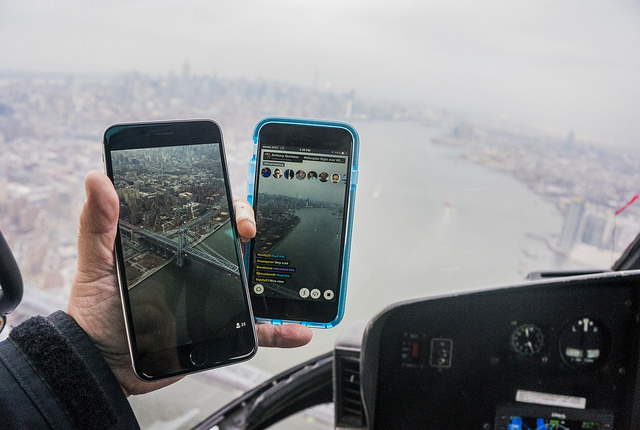Ironically, when I think about livestreaming video, a handful of events replay in my head.
The first happened on March 26. A fire raged on New York’s East Village. Almost immediately food blogger Andrew Steinthal used the just-released Periscope app to livestream the blaze. Periscope turns iPhones into remote TV cameras; a single click, and you’re broadcasting and spreading the news socially.
The week previous, another livestreaming app, Meerkat, had taken the technorati party SXSW by storm. But, on March 26, Periscope had its “Airbus in the Hudson” live news moment. And, backed by Twitter, Periscope eclipsed Meerkat, an app that had made livestreaming video cool again.
The next image is of Boston-based videographer Steve Garfield livestreaming himself from his Nokia N67 back in 2007. He was using Qik, a very early livestreaming application at first made for Nokia’s high-end N-series phones. The video was a bit janky and grainy but he was broadcasting from his phone, from the street, with no satellite truck, no cameraperson. Just him and a phone. Live.
That same year Max Hoat, the president of livestreaming pioneer Mogulus, used his new livestreaming software to broadcast the launch of the iPhone. Mogulus (now called livestream) turned a computer’s browser into a broadcast studio that could do livestreaming from multiple cameras with full switching, lower thirds, the works. It’s the software we use at rabble.ca for our livestreaming events today. When I saw what they did, I thought it wasn’t only the iPhone that changed the tech world that day.
Fast-forward to 2014 and I’m walking into city hall in Hamilton to watch a contentious city council meeting. There’s a CHCH TV broadcast van out front with its dish antenna aloft like a flagpole. Thick cables snake along the ground. Technicians fuss in the van, a reporter waits outside. Inside city hall, Joey Coleman, an independent journalist, has his camcorder jacked into a livestream box and a laptop. He’s broadcasting the event too, solo, and live. I’m in an overflow room so I call up Joey’s feed on my smartphone. The quality is better than broadcast.
A final event, this one from 1968. On December 9 that year, a square-jawed engineer, Douglas Englebart, put on what has been called “The Mother of All Demos.” He was showing off the oN-Line System (NLS) to about a thousand computer scientists gathered in Brooks Hall for the Fall Joint Computer Conference in San Francisco.
Englebart sat at a computer terminal with a giant image from an Eidophor theatre video projector behind him. The screen contained images of Englebart, his screen and, most impressively, video images of his colleagues at another screen in Menlo Park, 30 miles away.
The engineers and scientists in the room had never seen anything like it. Engelbart demonstrated the mouse, windowed computing, hypertext, collaborative document editing and video conferencing. All in a demo that had only a few technical hiccups. The rest of the world would have to wait another 16 years, and the launch of the Macintosh, to see its like again. And video streaming on a desktop computer? That was decades away.
And here we are, nearly 50 years later, able to beam a building fire worldwide from a phone the size of a Pop Tart. Easy, mobile, live and social video streaming is a remarkable tool for journalists or anyone who can say, “I was there, you weren’t. This is what I saw.” That is the simplest act of journalism. Not the only one. But, when the times require we bear witness, it’s a good start.
Listen to an audio version of this column, read by the author, here.
Wayne MacPhail has been a print and online journalist for 25 years, and is a long-time writer for rabble.ca on technology and the Internet.
Photo: Anthony Quintano/flickr



